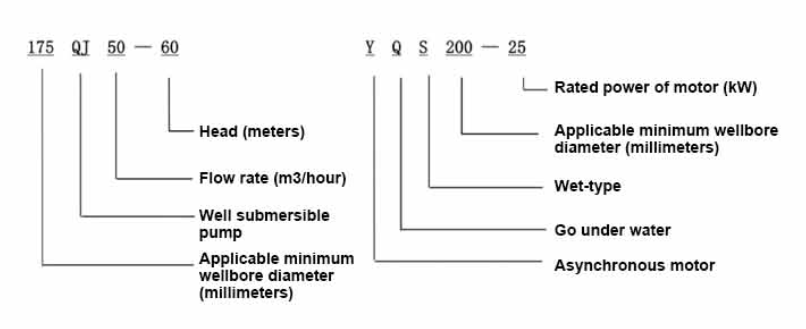dec . 12, 2024 23:37 Back to list
how to use a submersible pump
How to Use a Submersible Pump A Comprehensive Guide
Submersible pumps are versatile devices designed to be submerged in water or other liquids to pump them from one place to another. They are widely used in various applications, including draining flooded basements, emptying swimming pools, or transferring water for irrigation. Understanding how to properly use a submersible pump is essential for achieving optimal performance and ensuring safety during operation. This guide will walk you through the essential steps and tips for using a submersible pump effectively.
Selection of the Pump
Before you begin using a submersible pump, it's vital to select the right type for your specific needs. Submersible pumps come in various designs and capacities, tailored for different applications such as sewage, drainage, or clean water transfer. Consider factors such as the volume of water you need to move, the pump's total head (the height it can lift water), and the specific fluid characteristics (e.g., whether it's clean or contaminated).
Preparing for Use
1. Safety First Always turn off electricity to the area where you will be using the pump. Use a Ground Fault Circuit Interrupter (GFCI) to prevent electrical shocks. Ensure that the power source is compatible with the pump's voltage requirement.
2. Inspect the Equipment Before submerging the pump, inspect it for any visible signs of damage or wear. Check the power cord for any frays and ensure that all connections are secure.
3. Position the Pump When ready to use the pump, carefully position it in the water or liquid you wish to pump. Ensure that the pump is submerged at the recommended depth to prevent cavitation, which can damage the pump.
Operating the Pump
1. Connect the Hose Attach a suitable discharge hose to the pump’s outlet. Ensure it is secured tightly to prevent leaks. 2. Power On Once everything is securely in place, plug in the pump to the electrical outlet and switch it on. Observe the pump for a few moments to ensure it is operating smoothly without any unusual noises or vibrations.
how to use a submersible pump

3. Monitor the Pump Keep an eye on the pump during operation. Make sure it remains submerged, and periodically check for overheating or unusual odors, which can indicate mechanical failure.
After Use
1. Turn Off the Pump Once the desired water level is reached, turn off the pump and unplug it from the power source.
2. Remove the Pump Carefully lift the pump out of the water, ensuring that the power cord does not fall into the liquid.
3. Clean and Store After use, clean the pump to remove any debris or sediments that could clog the impeller. Store the pump in a dry place away from harsh weather conditions, especially during the off-season.
Additional Tips
- Regular Maintenance Regularly service your submersible pump as per the manufacturer's instructions. This typically includes checking the motor, seals, and impeller for wear. - Proper Usage Avoid running the pump dry, as this can lead to overheating and damage. Always ensure there is adequate liquid before starting.
- Emergency Ready If you frequently encounter flooding or heavy rainfall in your area, consider having a backup submersible pump on hand.
Conclusion
Using a submersible pump can make handling water-related tasks much easier and more efficient. By following these guidelines for safe and effective operation, you can ensure that your pump performs optimally and lasts for years to come. Whether it’s for home maintenance or agricultural use, understanding how to use a submersible pump is a valuable skill that can save you time, effort, and ensure safety in managing water.
-
Submersible Water Pump: The Efficient 'Power Pioneer' of the Underwater World
NewsJul.01,2025
-
Submersible Pond Pump: The Hidden Guardian of Water Landscape Ecology
NewsJul.01,2025
-
Stainless Well Pump: A Reliable and Durable Pumping Main Force
NewsJul.01,2025
-
Stainless Steel Submersible Pump: An Efficient and Versatile Tool for Underwater Operations
NewsJul.01,2025
-
Deep Well Submersible Pump: An Efficient 'Sucker' of Groundwater Sources
NewsJul.01,2025
-
Deep Water Well Pump: An Efficient 'Sucker' of Groundwater Sources
NewsJul.01,2025
-
 Submersible Water Pump: The Efficient 'Power Pioneer' of the Underwater WorldIn the field of hydraulic equipment, the Submersible Water Pump has become the core equipment for underwater operations and water resource transportation due to its unique design and excellent performance.Detail
Submersible Water Pump: The Efficient 'Power Pioneer' of the Underwater WorldIn the field of hydraulic equipment, the Submersible Water Pump has become the core equipment for underwater operations and water resource transportation due to its unique design and excellent performance.Detail -
 Submersible Pond Pump: The Hidden Guardian of Water Landscape EcologyIn courtyard landscapes, ecological ponds, and even small-scale water conservancy projects, there is a silent yet indispensable equipment - the Submersible Pond Pump.Detail
Submersible Pond Pump: The Hidden Guardian of Water Landscape EcologyIn courtyard landscapes, ecological ponds, and even small-scale water conservancy projects, there is a silent yet indispensable equipment - the Submersible Pond Pump.Detail -
 Stainless Well Pump: A Reliable and Durable Pumping Main ForceIn the field of water resource transportation, Stainless Well Pump has become the core equipment for various pumping scenarios with its excellent performance and reliable quality.Detail
Stainless Well Pump: A Reliable and Durable Pumping Main ForceIn the field of water resource transportation, Stainless Well Pump has become the core equipment for various pumping scenarios with its excellent performance and reliable quality.Detail
